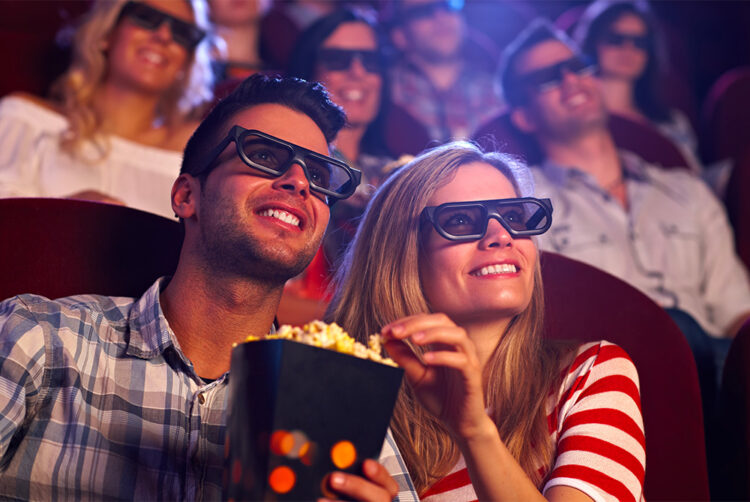Cinema is being squandered by brands

Opinion
Any brand who manages to move, astonish, entertain, or amuse a crowd in a cinema environment benefits exponentially.
On a recent rainy Sunday afternoon, I went to the cinema. To my surprise there were no ads. None. Just film trailers aimed at people like me to entice me back. Turns out that ‘The Garden Cinema’ is an independent cinema in central London whose members choose not to see ads.
Just celebrating its first anniversary it promises to show “films that are worth seeing, films you would be happy to see more than once. Films of all genres that are true to life, well made, that left us feeling better or wiser from having seen them.”
As the room darkened and the curtains began to draw back a woman behind me muttered under her breath — ‘Oh no, trailers, I hope they don’t go on too long’. I enjoyed the trailers, but I did miss the ads. It got me thinking.
I remember saying, quite truthfully, in my interview at advertising agency Ted Bates in the early 1980’s that I was the kind of person who went to the cinema in time to see the ads. Introduced to the joys of ‘The Flicks’ as she called them by my mother from an early age, I became her companion at weekday matinee showings after school.
I recall that one of the features of being brought up in a British colony was that every film showing ended with footage of the young Queen Elizabeth accompanied by the national anthem. Wearing a shimmering silver dress and crown she was shown being escorted to her throne by a dashing Prince Philip in military uniform. A scene I now recognise as the ceremonial opening of Parliament, but as a small girl it had all the Hollywood glamour of the movie we had just watched.
Now I look back and appreciate that it was a classic bit of propaganda from the days of Empire, which only stopped when the Bahamas achieved independence in 1973. It was powerful stuff and a lesson in the impact of the cinemas space, with its captive audience watching a big screen in a darkened room and all the strong effects of curated imagery and sound.
But perhaps most of all I learnt the power of repetition. The brand of the British monarchy with all its power, pomp and ceremony reinforcing its presence in the most impactful advertising space there is. And the film shown remained exactly the same for at least a decade.
Cinema has to compete with many alternative screens
One of my first assignments upon starting at Ted Bates in 1982 was to write a paper explaining why the growing sales of VHS tapes and the arrival of Blockbuster video did not mean cinema was dead. Yes, the audience numbers were declining but I argued they could still be usefully segmented, and there was a sense of special occasion about a trip to the cinema worth associating with.
Most of all, I pointed out, the high production values on offer enabled unrivalled impact and memorability. It was persuasive then and remains so now.
Happily there has been considerable investment in the cinema experience with smaller multi-screen venues, comfy seats and decent wine and olives joining the offering of hotdogs and popcorn. Competing successfully with their home cinema rival.
In the decades that followed me writing that essay we continued to enjoy an era of iconic cinema ads ranging from the arrival of Apple Mackintosh in ‘1984’ to Maxell ‘Break the sound barrier’ and The Guardian’s ‘Points of View’.
They were long form, shared the production values of the movies, and put those brands firmly in people’s heads. Indeed, many of the commercial directors of that time like David Putnam, Alan Parker and Ridley Scott went on to conquer Hollywood having cut their directorial teeth in advertising.
Not every cinema ad hit the high notes that these ones did, but the majority understood that people were there to be entertained and so they joined the party. There is something visceral about responding to a cinema ad as part of a crowd that is of a higher order than receiving it as an individual on a small screen.
Any brand who manages to move, astonish, entertain, or amuse a crowd in a cinema environment benefits exponentially. The space evokes a sense of premium quality, confidence, and fame. Just as it did for the Queen of my childhood.
Brands are failing to stick in minds
I think many people would say that one of the things they most missed during lockdowns was going to the cinema. I go often, and I still get there in time for the ads. But on the whole, I find I can’t recall many. And for those who think it’s because I’m older and have a poor memory, I beg to differ.
I’ve asked many fellow cinemagoers to name me an ad they can remember seeing there. Not many of them can. One spoke fondly of the EE ‘Orange Wednesdays’ promoting two for one ticket offer. (And yes, they did remember that it was for EE.) Another remembered recruitment ads for teaching and the army.
I was particularly struck by the person who said, ‘Do you mean the TV ads before the trailers?’ So, that person had no concept of ads made specifically for the cinema space.
Trying to think of a cinema ad that impressed me, what came to mind was the one for Refuge that often appeared just before the feature film in Picturehouse cinemas. It consists of simple black type on a pink background and starts, ‘We all know phones should be turned off at the cinema….’ The request for £5 via text to help women and children escaping domestic violence before you put your phone on silent has certainly stuck on my mind.
Made memorable because it is beautifully scripted for the precise media moment with an easily actionable and relevant request. I have seen it frequently without ever tiring of it. In fact, I have been moved to donate, and that is not something I do often. I’m pleased to read that this particular campaign is on track to raise £50K by the end of this month.
The craft is alive and well
Not just relying on memory also went the prompted route to give my brain a nudge. A google of ‘best cinema ads of 2022’ took me to the Digital Cinema Awards. Having missed the winners when they aired, I had since viewed them online.
There was a group who cleverly leverage the movie space such as Disney+ ‘Frighteningly good’, Ernest Jones ‘The end frame is just the beginning’, and BT’s ‘Banish the Ultimate Cinematic Cliff-hanger with unbreakable broadband’.
Others went for the whole cinematic experience and impact such as the charity Mind with their film ‘Connecting Mind and its services with those who need it most’ and the surprising and amusing Netflix ‘Man vs Bee’. It was heartening to see that the art of making an impactful cinema ad is still alive and well.
I still wonder if any of those brands ran them for long enough? I suspect we change our cinema copy, at great expense, long before any viewer tires of it.
My advice to brands who approach the cinema space would be to take a leaf out of the Garden Cinema’s book. Make cinema ads that are worth seeing. Ads you would be happy to see more than once. Ads of all genres that are true to life, well made, and left us feeling better or wiser from having seen them.
 Jan Gooding is one of the UK’s best-known brand marketers, having worked with Aviva, BT, British Gas, Diageo and Unilever. She is now an executive coach, chair of PAMCo and Given. She writes for The Media Leader each month.
Jan Gooding is one of the UK’s best-known brand marketers, having worked with Aviva, BT, British Gas, Diageo and Unilever. She is now an executive coach, chair of PAMCo and Given. She writes for The Media Leader each month.
Career Leaders: The Media Leader‘s weekly bulletin with thought leadership, news and analysis dedicated about media careers, training, development and wellbeing.
Sign up for free to ensure you stay up to date every Tuesday.



